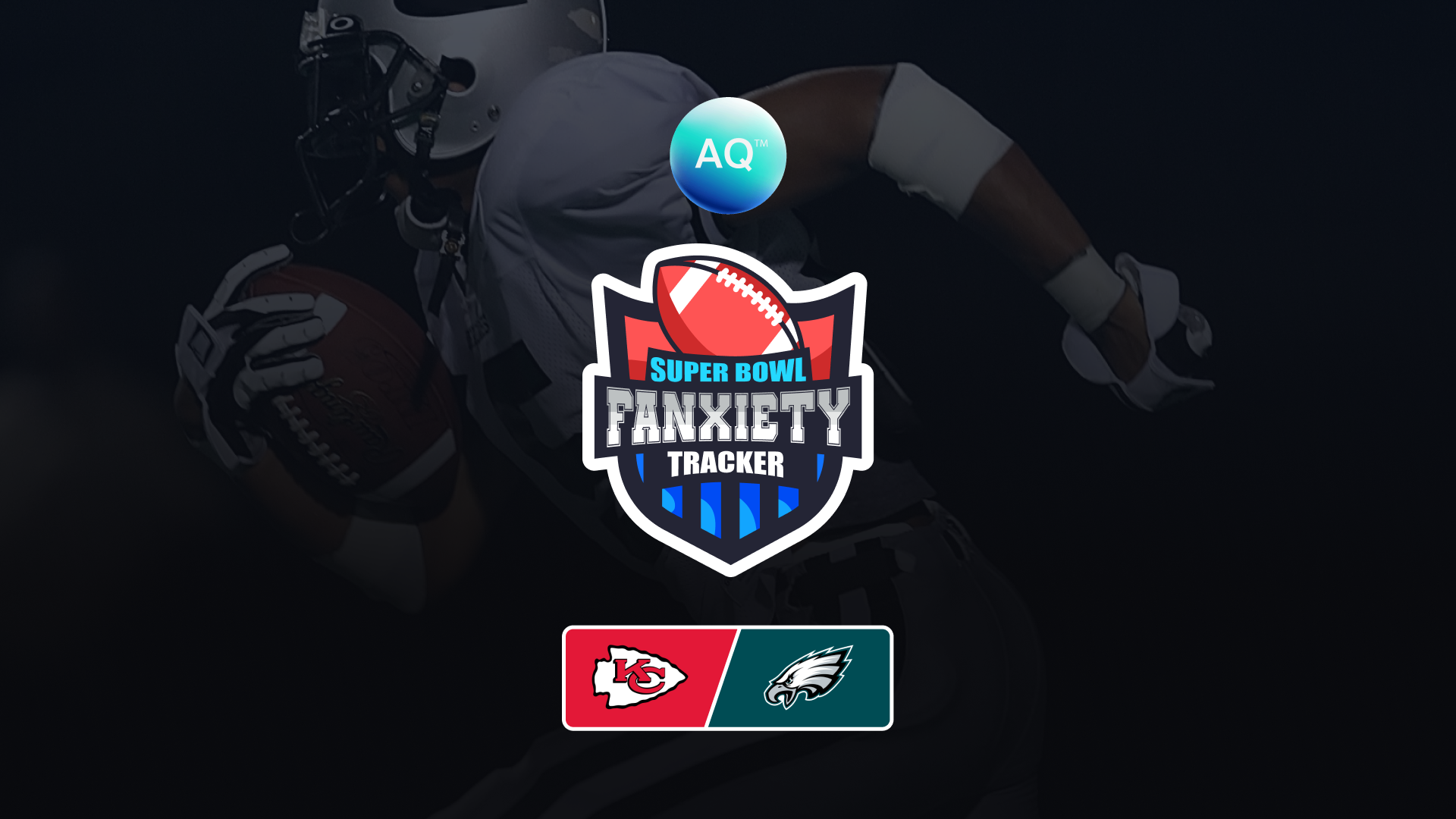If you suffer from generalized anxiety disorder, or GAD, you know how difficult it is to deal with. The constant feelings of fear, dread, and worry never seem to go away, despite a lack of danger in your everyday life. These nagging feelings can make it hard to function at work, in social situations, and even at home. Though anxiety can certainly be treated with medication, several mind-body approaches can be just as effective. Here’s your guide to generalized anxiety disorder treatment without medication.
What is generalized anxiety disorder?
Generalized anxiety disorder (GAD) is a mental health disorder characterized by persistent and excessive anxiety about everyday occurrences and situations. Anxiety is the most common mental health disorder in the United States, impacting nearly 20% of people at any given time. People with GAD often experience:
- Worry that is out of proportion to the impact of the event or situation
- Overthinking and jumping to the worst possible conclusion
- Indecisiveness
- Muscle tension
- Difficulty relaxing
- Feeling on edge
- Difficulty concentrating
- Fatigue
- Insomnia
- Muscle tension
- Trembling
- Nausea
- IBS and other GI issues
- Irritability
It’s important to keep in mind that anxiety isn’t stress. Rather, it’s your body and brain’s reaction to situations you perceive as stressful. It can manifest itself in a number of ways and no two people will experience it the same way.
How does anxiety affect the brain?
Anxiety affects the brain in many ways. In short, it causes a disruption of the emotional processing center in the brain. The amygdala, hippocampus, hypothalamus, and thalamus are responsible for most of the brain’s emotional processing. People with GAD often have heightening activity in these areas.
Here are the major effects of anxiety on the brain.
Your brain floods the central nervous system with stress hormones
When you’re feeling anxious, your body goes into fight or flight mode, which prompts your brain to try to fight off whatever is making you anxious. Once in fight or flight mode, your brain floods your central nervous system with cortisol and adrenaline.
These stress hormones tell your body something scary is going to happen so that your body can better cope with danger. They make your reflexes faster and your senses sharper. In a non-anxious brain, the sympathetic nervous system calms you down once the danger is gone. But in an anxious brain, it’s much more difficult to reach a sense of calm. Instead, the cortisol and adrenaline cause your brain to release even more hormones, which leads to feelings of overwhelm and intense anxiety. In some cases, this can lead to full-on panic attacks.
Your brain becomes hyperactive to perceived threats
Anxiety not only releases stress hormones. It can also make your brain hyperactive to perceived threats. If you struggle with anxiety on a regular basis, your amygdala, or the “fear center of your brain,” grows larger. This small, almond-shaped structure is part of the limbic system. When it senses danger or threats, it alerts the hypothalamus, which is what triggers the brain’s fight or flight response.
People with anxiety often have enlarged and hyperactive amygdalas, which can cause it to send false alarms. This, in turn, makes the body and brain feel threatened even in the absence of a threat.
Rational thinking becomes more difficult
Anxiety has been found to weaken the connection between the prefrontal cortex and the amygdala. When the amygdala senses danger, it should activate the prefrontal cortex to help you think rationally. This helps you process information, solve problems, and respond appropriately to stressful situations. But in anxious brains, the connection is weak, rational thinking becomes more difficult, and erratic behavior becomes more likely.
Your brain holds on to difficult memories and negative emotions
When you feel anxious, your body is under a large amount of stress. Stress has been found to shrink the hippocampus, the part of your brain that processes long-term memories. As it shrinks, it can become more difficult to hold on to memories. But anxiety tricks the hippocampus into thinking anxious memories are safe to store and remember. This causes your brain to hold on to difficult memories and negative emotions rather than positive ones.
In short, anxiety can wire your brain to remember events relating to failure, danger, and threats and suppress those relating to safety, success, and achievement.
How anxiety medication works
Multiple types of medication can be used to treat anxiety. The two most common types are 1) antidepressants and 2) anti-anxiety drugs.
Antidepressants
Antidepressants are typically used to treat depression but can also help people with anxiety disorders. Most often, two types of antidepressants are used to treat anxiety: selective serotonin reuptake inhibitors (SSRIs) and serotonin-norepinephrine reuptake inhibitors (SNRIs). Both can be used to help treat anxiety long-term.
How they work: SSRIs increase the amount of serotonin in the brain, a “feel-good” neurotransmitter that helps your brain cells communicate better and boost your mood. SNRIs also help balance chemicals in the brain by boosting serotonin as well as norepinephrine, another neurotransmitter that can impact mood and stress.
Anti-anxiety medications
The most common type of anti-anxiety medication is benzodiazepines. Unlike antidepressants, they take effect almost immediately and are typically used to treat anxiety attacks or short-term flare-ups because when used long-term, they can trigger withdrawal symptoms.
How they work: Benziodiazepans slow the central nervous system, which helps you relax both mentally and physically.
It’s important to keep in mind that these medications are used to help ease the symptoms of anxiety; they are not a cure-all.
Why try alternative treatment options
There are many reasons why individuals who struggle with anxiety may want to try alternative treatment options. Most often, people consider drug-free options for the following reasons:
Adverse side effects and safety concerns
Though some people with generalized anxiety disorder find relief from medication, they often come with a long list of severe side effects and safety concerns.
Antidepressants can lead to:
- Agitation
- Drowsiness
- Dry mouth
- Fatigue
- Headaches
- Nausea
- Nervousness
- Insomnia
- Sexual dysfunction
- Sweating
- Weight gain
In rare cases, SSRIs have been found to make depression worse for people, which can lead to an increased risk of suicide.
Benzodiazepines side effects include:
- Extreme drowsiness
- Dizziness
- Confusion
- Blurred vision
- Memory problems
- Difficulty concentrating
- Balance issues
- Slurred speech
- Upset stomach
Benzodiazepines can also worsen cases of pre-existing depression. And when taken regularly, it can lead to physical dependence and tolerance. People with a history of substance abuse are at a greater risk for addiction, but even those without a history can become dependent or addicted.
For reasons that aren’t fully understood, benzodiazepines can sometimes also have the opposite of their intended effects and actually make anxiety worse, leading to mania and impulsive behavior.
For many people, the benefits of anxiety medication don’t outweigh the side effects. When this occurs, many people seek alternative, drug-free treatment options.
Generalized anxiety disorder treatment without medication
Thankfully, medication isn’t the only treatment option available for generalized anxiety disorder. A number of drug-free options are available, many of which have less severe (if any) side effects.
Biomarker based mindfulness
According to a recent study by the CDC, mindfulness meditation is the fastest growing health trend in the United States—and for a good reason. Research has revealed that meditation and mindfulness can interrupt our anxiety and fight-or-flight reactions. In doing so, it quiets the amygdala, alleviates anxiety-associated symptoms, and promotes inner peace.
With enough practice, mindful meditation can also increase cortical thickness, create new neural pathways, and shrink the amygdala. This significantly improves the connection between the prefrontal cortex and amygdala, which is often weakened in people with anxiety.
Over the last several years, technology has helped make mindfulness more personalized. For the first time ever, we can quantify anxiety levels and practice biomarker-based mindfulness. In doing so, training is more personalized and effective.
In fact, technology has evolved so much that we can now track anxiety levels in real-time from our Apple Watch. This can help us better understand what activities in our daily lives could be contributing to anxiety. And when we’re aware of our anxiety—and what’s triggering it—we can better manage it.
Psychotherapy
Also known as talk therapy, psychotherapy involves working with a licensed therapist to manage anxiety symptoms better. Cognitive-behavioral therapy (CBT), in particular, is considered the most effective form of psychotherapy for people with generalized anxiety disorder.
CBT addresses negative thought patterns involving the way we look at the world and ourselves. It involves two main components.
- Cognitive therapy – Cognitive therapy explores and identifies how negative thought patterns can contribute to anxiety.
- Behavior therapy – Behavior therapy examines how you react to situations that trigger anxiety.
The premise of cognitive behavioral therapy is that our thoughts—rather than external events—impact how we feel. Therefore, it’s more about your perception of a situation than it is about the situation itself. In other words, if you can change the way you think, you can change the way you feel.
Transcranial magnetic stimulation (TMS)
Transcranial magnetic stimulation, or TMS for short, is a non-invasive therapy that uses magnetic pulses to help calm areas of the brain that are responsible for our fear responses.
Most widely used to treat depression, TMS for generalized anxiety disorder treatment takes into account any other mental health-related issues that could be contributing to anxiety, including depression or phobias. And as you may or may not know, anxiety and depression are often interconnected.
Because the two mood disorders are often seen together in presentation, it’s likely they’re caused by dysregulation of the same part of the brain that is responsible for emotional processing.
TMS treatment targets this part of your brain and administers rapid, high-frequency pulses that help correct misfires of electrochemical signaling. In doing so, areas of the brain that are overactive due to anxiety are brought back to normal reactivity levels.
Neurofeedback
Neurofeedback, or EEG biofeedback, is a type of all-natural, non-invasive brain training. Through real-time feedback and operant conditioning, it can create long-lasting changes in the brain.
As mentioned, people who suffer from generalized anxiety disorder have a hyperactive amygdala. Neurofeedback helps train the brain to consciously modulate that activation and restore a weakened connection between the amygdala and prefrontal cortex.
It can also help teach your brain how to produce more slow-moving brainwaves, which have been found to be in short supply in people with GAD.
Just like any type of training, it takes practice. But after enough treatment sessions, regulating your brain and being able to consciously regulate the amygdala becomes second nature.
The best part? There are no negative side effects associated with neurofeedback.
Lifestyle changes
Lifestyle changes are a simple, but effective way to better manage generalized anxiety disorder. The following lifestyle changes can greatly reduce anxiety-associated symptoms.
- Prioritize sleep – Ample sleep is closely connected to improved mental health. Try to get 7-9 hours each night and go to bed and get up at the same time every day. Our brains function better when we have routines in our life.
- Cut back on caffeine – Caffeine is a stimulant that can turn your central nervous system into overdrive. Consider drinking herbal tea or decaf coffee instead.
- Stay active – Regular exercise helps your body produce more serotonin and endorphins, which can improve your ability to manage stress. Wondering where to start? Yoga is a great way to relieve stress, reduce anxiety, and learn breathing techniques that will help you feel more grounded.
- Eat a nutritious diet – Eating nutrient-dense, balanced meals is key to managing anxiety. Ensure your meals include both protein and complex carbohydrates, which are synthesized into serotonin.
- Drink enough water – Being even mildly dehydrated can impact your mood. Aim for at least 8 eight-ounces glasses of water per day.
- Avoid or limit alcohol – Alcohol is a depressant, which can make you feel anxious the next day. It can also disrupt your natural sleep cycle, leaving you feeling tired or restless.
Learn more about generalized anxiety disorder treatment without medication
If you’re interested in learning more about generalized anxiety disorder treatment without medication, it’s worth giving one of the above-mentioned treatment options a try. Here at Mindwell Labs, we wholeheartedly believe in the power of meditation and mindfulness to help ease anxiety.
If you’re interested in learning more, download our app, AQ™, to gain access to bio-marker-based mindfulness training, a 24/7 Wellness Monitor that tracks anxiety in real-time, and much more.





